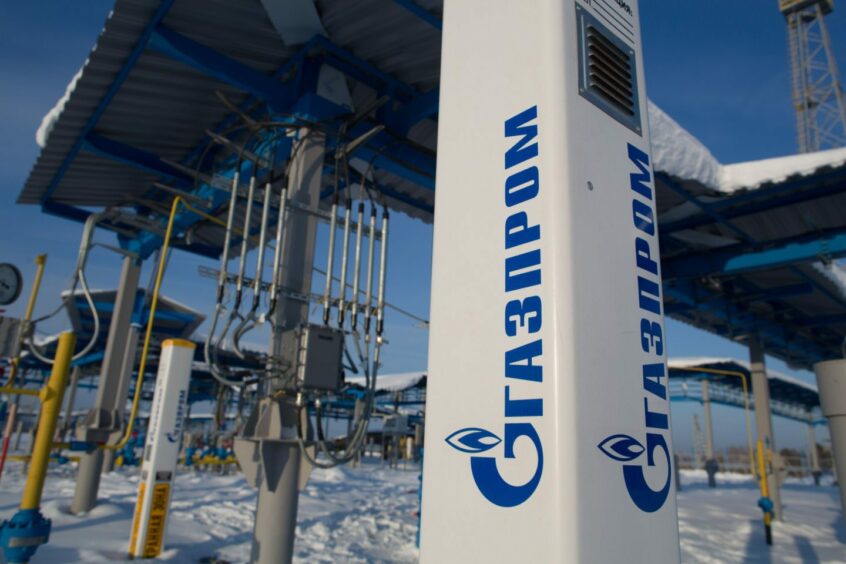
Russia stepped up the use of energy as a weapon by further cutting natural gas shipments via its biggest pipeline to Europe, prompting Germany to accuse the Kremlin of trying to drive up prices.
Gazprom PJSC is curbing gas supplies via its Nord Stream pipeline to Germany by 60%, increasing an initial cut to Europe’s top buyer announced on Tuesday. The move adds to a 15% reduction in flows to Italy, the continent’s second-largest customer of Russian gas, putting more pressure on already tight European energy markets and sending gas prices surging more than 25%.
German Economy Minister Robert Habeck said Russia was trying to unsettle markets and prop up prices, but that security of supply was guaranteed for now. The curbs reignited tensions with Moscow, which had calmed down after several European countries found ways of paying for gas in rubles, meeting a demand from President Vladimir Putin.
“The industry must prepare for zero Russian gas,” said Thierry Bros, a former energy analyst and a professor at the Paris Institute of Political Studies. “EU companies that accepted to twist the contract to continue to receive gas should now understand that political diktats can come anytime from the Kremlin.”
Gazprom PJSC is capping supplies via Nord Stream to 67 million cubic meters a day from Thursday. That’s down from a cut of 40% to a limit of 100 million cubic meters a day announced on Tuesday. Utility giant Uniper SE, Germany’s top buyer of Russian gas, said it had received 25% less gas than it had contracted from Gazprom.
The Dusseldorf-based company said so far it’s been able to replace the missing volumes with natural gas from other sources. A company spokesperson said it’s too early to tell how much the reduction will impact its finances.
Gazprom blamed the curbs on technical issues with turbines manufactured by Siemens Energy AG that are crucial for the functioning of the pipeline.
Siemens said on Tuesday that one turbine that had been sent for repairs was stranded in Canada due to Ottawa’s sanctions that prohibit technical services to the Russian oil and gas industry. But Habeck dismissed the suggestion that technical issues were the main reason for the gas cuts.
Oliver Krischer, a deputy economy minister, said the curbs could be linked to Germany’s 10-billion euro ($10.4 billion) bailout of a former Gazprom unit now under the control of the country’s energy regulator since.
“A connection between the two problems cannot be ruled out, one could be a reaction to the other,” Krischer told the lower house of parliament’s climate protection and energy committee on Wednesday.
Italian Cut
Russia is also limiting supplies to Italy, another country that agreed to pay for gas under the new payment terms imposed by the Kremlin. Eni SpA said on Wednesday that Gazprom informed the Italian energy giant that it would curb supplies by about 15%. The St. Petersburg-based company didn’t provide a reason for the cut.
“Italy can rightly feel aggrieved at receiving reduced flows as one of the ‘friendlier’ allies to pay for Russian gas in rubles and not on Nord Stream’s direct route,” said Tim Partridge, head of energy trading at DB Group Europe.
The loss of Russian supply coincided with a drop in US capacity to ship liquefied natural gas (LNG) to the region after a major export terminal in Texas was damaged by fire. The operator of the Freeport LNG export facility in Texas said on Tuesday that it may take 90 days for the plant to be partially back online, far longer than an earlier projection of a minimum three weeks. Full capacity isn’t expected to be available until late 2022.
“These significant gas outages East and West of Europe are a reminder of the fragility of the physical infrastructure that underpins the global gas market,” said Zongqiang Luo, an analyst at Norwegian consultant Rystad Energy.
Winter Crunch
European gas prices fell in April and May as a record number of cargoes carrying LNG arrived at the continent’s shores, helping fill storage sites ahead of winter. The renewed standoff between Russia and Europe has rekindled fears over security of supply, fuelling fears the continent won’t have enough fuel to heat homes and power industries this winter.
Benchmark European gas futures traded in the Netherlands rose 121.74 euros a megawatt-hour, the highest since April.
“Russia is using gas as a weapon again, sending gas prices to new highs, with the objective to limit Europe’s capacity to fill up storage levels,” said Timm Kehler, chairman at the German gas industry lobby group Zukunft Gas. “Europe energy markets got even tighter now and it might be difficult for companies to tap gas to fill the gap.”